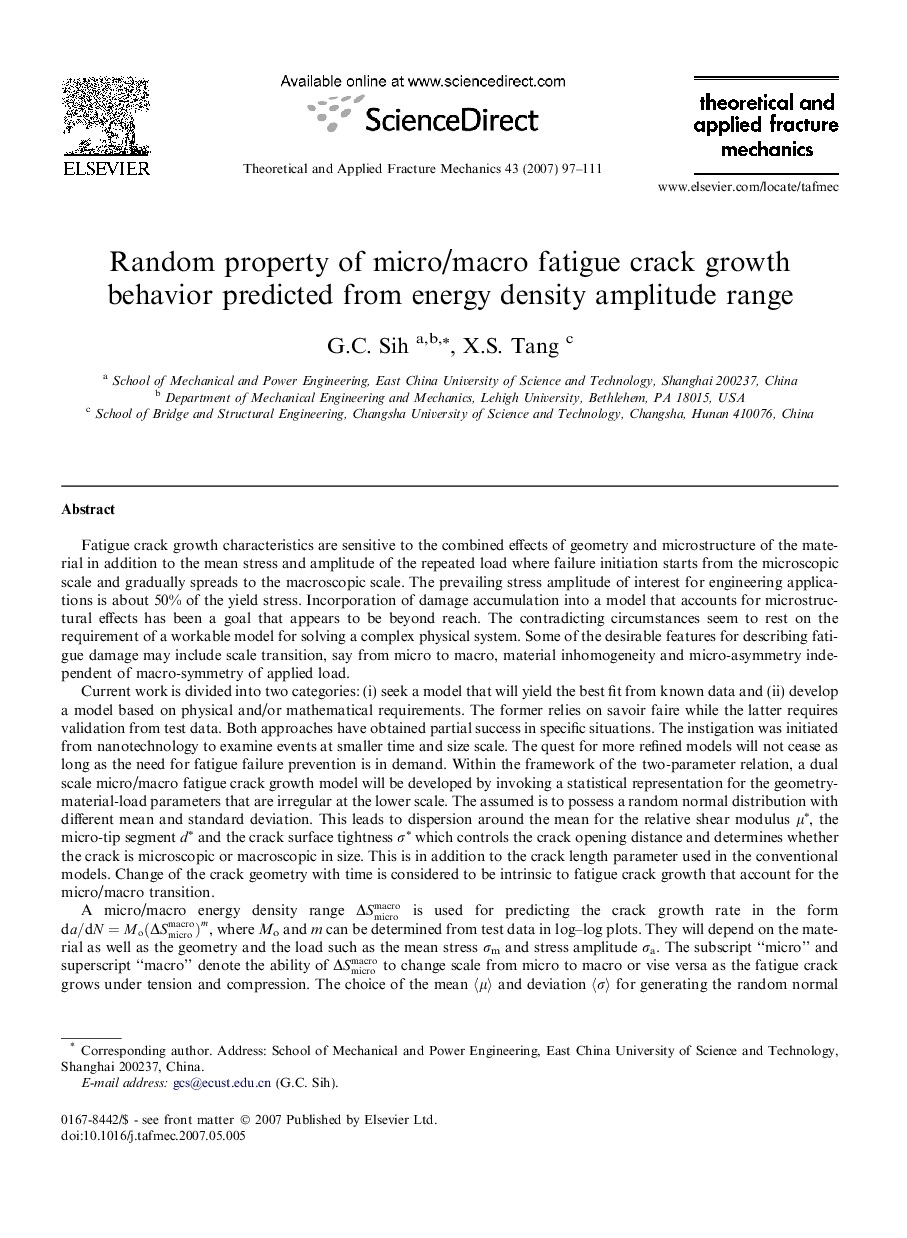| کد مقاله | کد نشریه | سال انتشار | مقاله انگلیسی | نسخه تمام متن |
|---|---|---|---|---|
| 807607 | 905575 | 2007 | 15 صفحه PDF | دانلود رایگان |

Fatigue crack growth characteristics are sensitive to the combined effects of geometry and microstructure of the material in addition to the mean stress and amplitude of the repeated load where failure initiation starts from the microscopic scale and gradually spreads to the macroscopic scale. The prevailing stress amplitude of interest for engineering applications is about 50% of the yield stress. Incorporation of damage accumulation into a model that accounts for microstructural effects has been a goal that appears to be beyond reach. The contradicting circumstances seem to rest on the requirement of a workable model for solving a complex physical system. Some of the desirable features for describing fatigue damage may include scale transition, say from micro to macro, material inhomogeneity and micro-asymmetry independent of macro-symmetry of applied load.Current work is divided into two categories: (i) seek a model that will yield the best fit from known data and (ii) develop a model based on physical and/or mathematical requirements. The former relies on savoir faire while the latter requires validation from test data. Both approaches have obtained partial success in specific situations. The instigation was initiated from nanotechnology to examine events at smaller time and size scale. The quest for more refined models will not cease as long as the need for fatigue failure prevention is in demand. Within the framework of the two-parameter relation, a dual scale micro/macro fatigue crack growth model will be developed by invoking a statistical representation for the geometry-material-load parameters that are irregular at the lower scale. The assumed is to possess a random normal distribution with different mean and standard deviation. This leads to dispersion around the mean for the relative shear modulus μ∗, the micro-tip segment d∗ and the crack surface tightness σ∗ which controls the crack opening distance and determines whether the crack is microscopic or macroscopic in size. This is in addition to the crack length parameter used in the conventional models. Change of the crack geometry with time is considered to be intrinsic to fatigue crack growth that account for the micro/macro transition.A micro/macro energy density range ΔSmicromacro is used for predicting the crack growth rate in the form da/dN=Mo(ΔSmicromacro)m, where Mo and m can be determined from test data in log–log plots. They will depend on the material as well as the geometry and the load such as the mean stress σm and stress amplitude σa. The subscript “micro” and superscript “macro” denote the ability of ΔSmicromacro to change scale from micro to macro or vise versa as the fatigue crack grows under tension and compression. The choice of the mean 〈μ〉 and deviation 〈σ〉 for generating the random normal distribution will depend on the geometry-material-load parameters and can be decided from the oscillations of the dispersion of crack length around the mean.
Journal: Theoretical and Applied Fracture Mechanics - Volume 48, Issue 2, October 2007, Pages 97–111